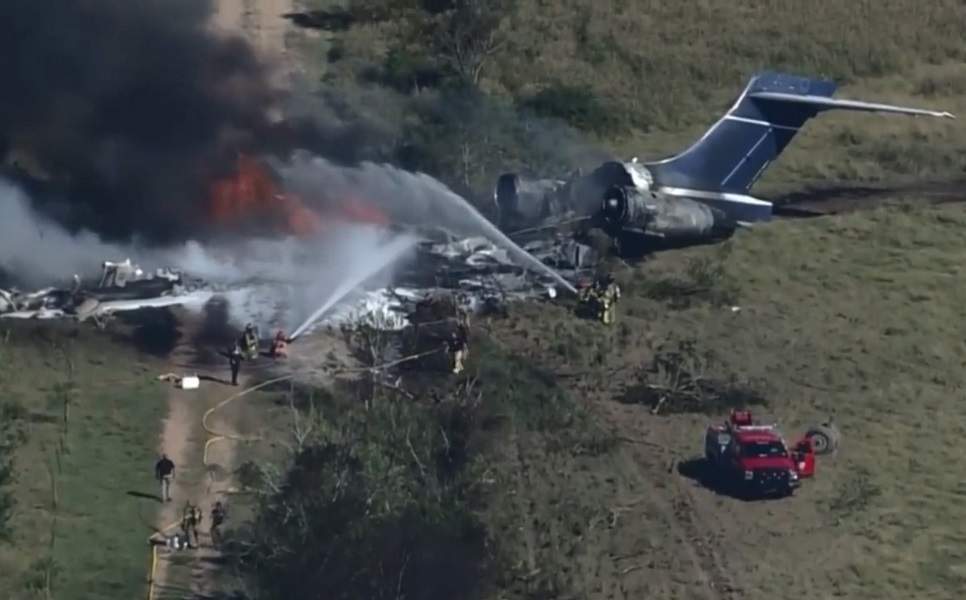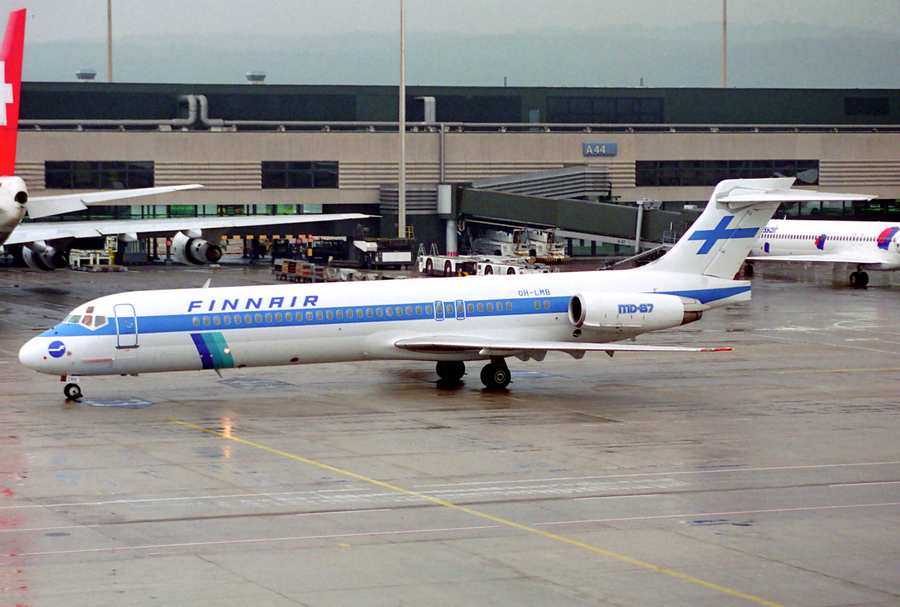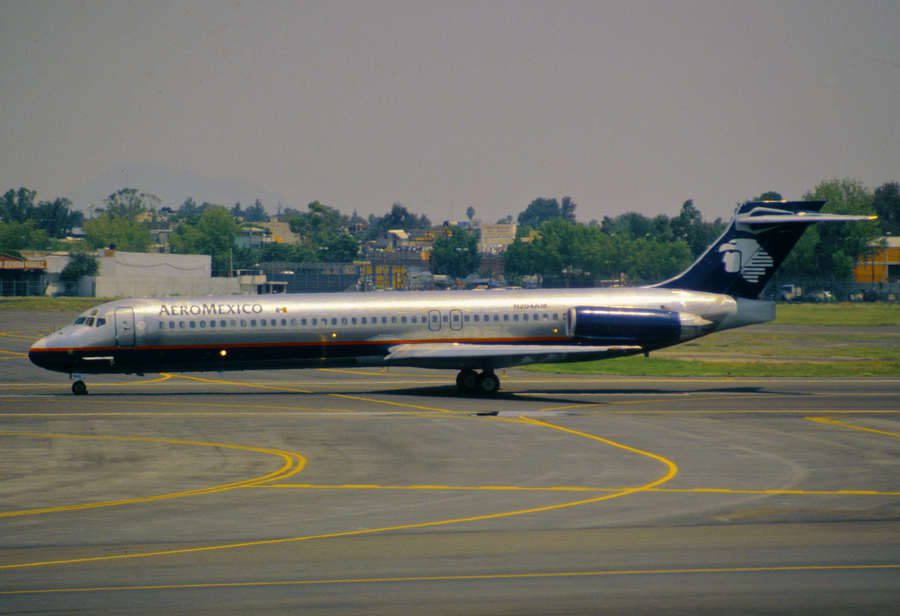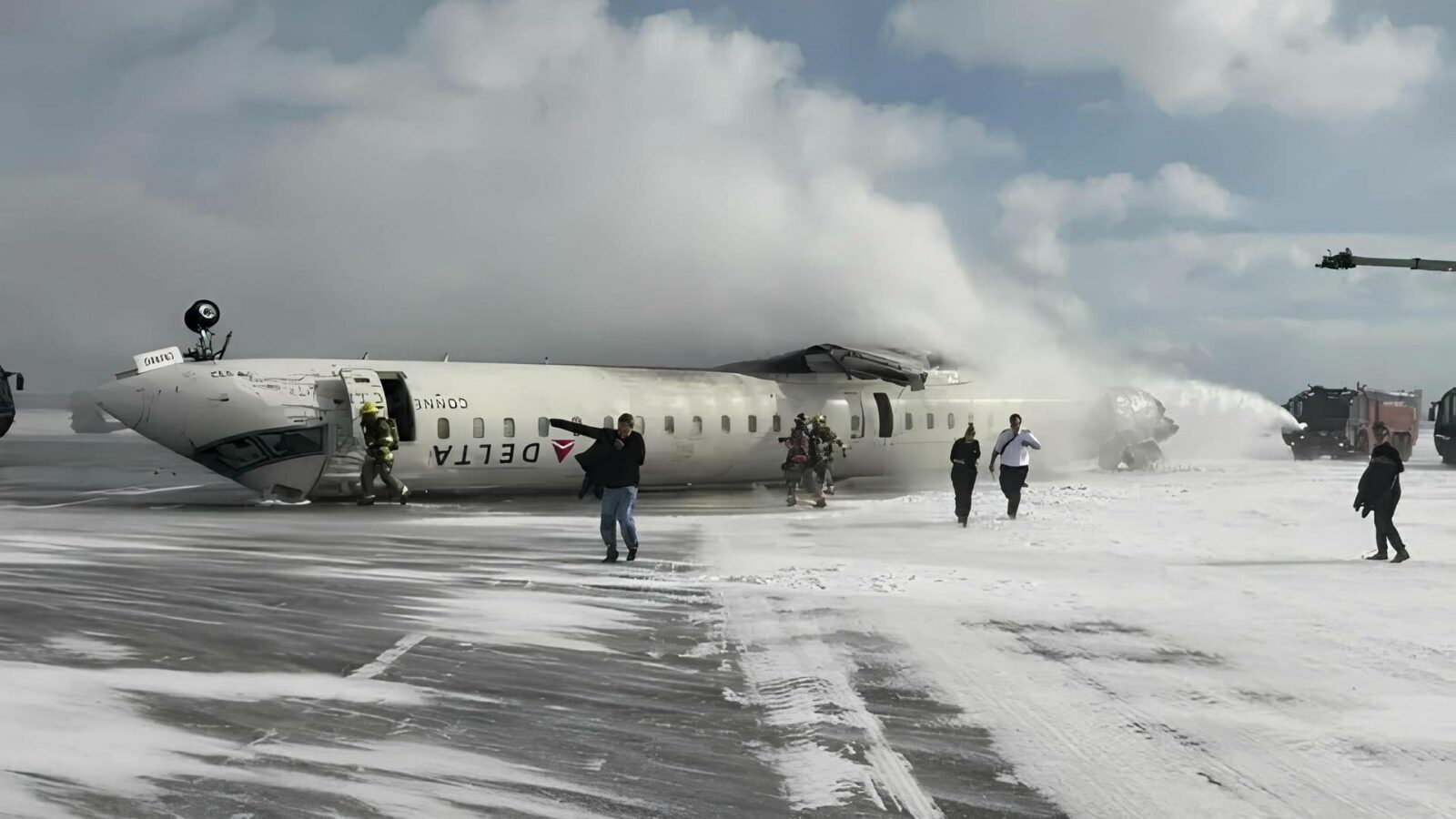A privately-owned MD-87 narrowbody crashed while attempting to take off in Houston, Texas. But thankfully, there were no serious injuries.
The incident happened earlier today (Tuesday the 19th of October), at Houston Executive Airport (KTME) in Waller County, Texas, USA. It involved a corporate MD-87, taking off from Houston, heading for Boston, Massachusetts. There were 21 occupants onboard: 2 flight crew, one flight attendant and 18 passengers.

The flying crew lined up with runway 36, to take off. It is still too early to determine the exact circumstances leading to the crash. But according to local reports, the aircraft did not appear to rotate during its take-off run. There are visible tyre marks, showing that the pilots braked, as the privately-owned MD-87 was leaving the runway.
The Path Of The Privately-Owned MD-87
The jet broke through the airport perimeter, flew off a raised edge and over Morton Road, north of the airport. It then impacted an open field, where it began to break up. The jet finally came to rest approximately 1,500 feet (460 metres) beyond the runway, turned about 90 degrees to the left, after impacting a tree line. The thrust reverser “buckets” of the plane’s engines appear to be stowed.

The privately-owned MD-87 would have had a considerable amount of fuel at the start of this flight. Consequently, a post-accident fuel fire consumed almost the entire aircraft. But incredibly, all 21 occupants “self-extricated” from the accident site, with no serious injuries! One occupant reported some back pains, another had temporary breathing difficulties.
There was a power line running along the road, beyond the airport perimeter. The MD-87 tore through it, causing a power outage that affected 1,800 customers. The power company restored the damage relatively quickly, according to reports. The NTSB will investigate the accident, but by all accounts, things could have gone much worse.

The aircraft is a nearly 34-year-old, privately-owned McDonnell Douglas MD-87 (DC-9-87), with tail number N987AK. It previously flew for Finnair and Aeromexico, before getting a corporate interior. Its current owner is 987 Investments LLC, whose owner is J. Alan Kent. He was onboard the aircraft at the time of the crash. He and his party were going to Boston, to attend an American League Championship Series baseball game.




2 comments
daanovermars
In further video evidence I found that the RW brake marks are visible from approximately 1500 feet until the end of the RW. The NTSB reported 1200 feet brake marks.
Those pilots must have been terrified.
daanovermars
After checking the photos and videos the distance between the end of the RWY and the final place of the plane is about 1300 feet (approxim. 400 m).
It is clearly visible that there are brake marks on the RW.
According to some reports these have a length of 1500 feet. In video evidence I found at least 650 feet of brake marks. Especially the left main tires are very well visible from the third center marks beyond the 18 number.
The CVR and FDR have been recovered.
This looks very much like a RTO, rejected take off, after V1 and after Vr, given the distance the plane travelled after it left the end of the RWY.
Reports talk about a maximum speed of 150kt which seems possible.
During the first part of the take off roll a small cloud of smoke was seen in a video that can be found on the internet. I confirm this. It was still at a relatively low speed, not much more than 50kt but it is hard to guess. It is not easy to see if it was the left or right engine. My best guess it was left.
Another report says that the plane did not fly before this flight for 10 month. This could be a clue, but not necessarily if all the proper maintenance procedures were followed.
On the video evidence withe plane in flames a black area behind the right engine is visible. This is upwind and only behind the right, not behind the left engine. It is a clue that the right engine was functioning until the plane stopped and the left engine not.
We will have to wait for the first NTSB report to know what caused this crash.
It is a miracle that everybody survived, and really helpful to for the investigation as well as the crew and the passengers can report what happened.